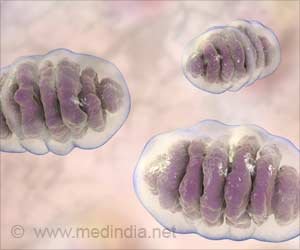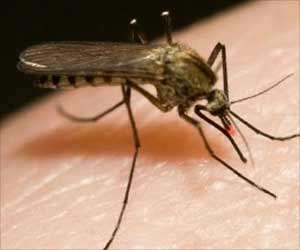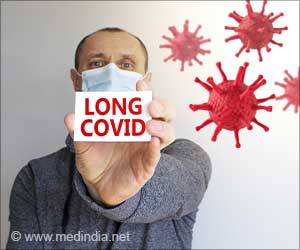Almost all of the DNA that makes up the human genome – the body’s ‘blueprint’ – is contained within the nuclei of our cells. Among other functions, nuclear DNA codes for the characteristics that make us individual as well as for the proteins that do most of the work in our bodies.
‘Mitochondria is the ‘batteries’ that power our cells. It is shown to play an unexpected role in common diseases such as type 2 diabetes and multiple sclerosis The genetic variants in the DNA of mitochondria could increase the risk of developing these conditions, as well influence characteristics such as height and lifespan.’
Our cells also contain mitochondria, often referred to as ‘batteries’, which provide the energy for our cells to function. They do this by converting the food that we eat into ATP, a molecule capable of releasing energy very quickly.
Each of these mitochondria is coded for by a tiny amount of ‘mitochondrial DNA’. Mitochondrial DNA makes up only 0.1% of the overall human genome and is passed down exclusively from mother to child. While errors in mitochondrial DNA can lead to so-called mitochondrial diseases, which can be severely disabling, until now there had been little evidence that these variants can influence more common diseases.
Several small-scale studies have hinted at this possibility, but scientists have been unable to replicate their findings. Now, a team at the University of Cambridge has developed a new technique to study mitochondrial DNA and its relation to human diseases and characteristics in samples taken from 358,000 volunteers as part of UK Biobank, a large-scale biomedical database and research resource.
“Using this new method, we’ve been able to look for associations between the numerous features that have been recorded for participants of UK Biobank and see whether any correlate with mitochondrial DNA. Aside from mitochondrial diseases, we don’t generally associate mitochondrial DNA variants with common diseases. But what we’ve shown is that mitochondrial DNA – which we inherit from our mother – influences the risk of some diseases such as type 2 diabetes and MS as well as a number of common characteristics,” says Dr Joanna Howson, who carried out the work while at the Department of Public Health and Primary Care at the University of Cambridge.
Among those factors found to be influenced by mitochondrial DNA are: type 2 diabetes, multiple sclerosis, liver and kidney function, blood count parameters, life span and height.
While some of the effects are seen more extremely in patients with rare inherited mitochondrial diseases – for example, patients with severe disease are often shorter than average – the effect in healthy individuals tends to be much subtler, likely accounting for just a few millimetres’ height difference, for example.
There are several possible explanations for how mitochondrial DNA exerts its influence. One is that changes to mitochondrial DNA lead to subtle differences in our ability to produce energy. However, it is likely to be more complicated, affecting complex biological pathways inside our bodies – the signals that allow our cells to operate in a coordinated fashion.
The ultimate aim of study is to understand the mechanisms that underlie these diseases and find new ways to treat them. Our work could help identify potential new drug targets.
Unlike nuclear DNA, which is passed down from both the mother and the father, mitochondria DNA is inherited exclusively from the mother. This suggests that the two systems are inherited independently and hence there should be no association between an individual’s nuclear and mitochondrial DNA – however, this was not what the team found.
The researchers showed that certain nuclear genetic backgrounds are associated preferentially with certain mitochondrial genetic backgrounds, particularly in Scotland, Wales and Northumbria. This suggests that our nuclear and mitochondrial genomes have evolved – and continue to evolve – side-by-side and interact with each other.
One reason that may explain this is the need for compatibility. ATP is produced by a group of proteins inside the mitochondria, called the respiratory chain. There are over 100 components of the respiratory chain, 13 of which are coded for by mitochondrial DNA; the remainder are coded for by nuclear DNA.
Even though proteins in the respiratory chain are being produced by two different genomes, the proteins need to physically interlock like pieces of a jigsaw. If the mitochondrial DNA inherited by a child was not compatible with the nuclear DNA inherited from the father, the jigsaw would not fit together properly, thereby affecting the respiratory chain and, consequently, energy production.
This might subtly influence an individual’s health or physiology, which over time could be disadvantageous from an evolutionary perspective. Conversely, matches would be encouraged by evolution and therefore become more common. This could have implications for the success of mitochondrial transfer therapy – a new technique that enables scientists to replace a mother’s defective mitochondria with those from a donor, thereby preventing her child from having a potentially life-threatening mitochondrial disease.
“It looks like our mitochondrial DNA is matched to our nuclear DNA to some extent – in other words, you can’t just swap the mitochondria with any donor, just as you can’t take a blood transfusion from anyone. Fortunately, this possibility has already been factored into the approach taken by the team at Newcastle who have pioneered this therapy,” says Professor Patrick Chinnery from the MRC Mitochondrial Biology Unit at Cambridge.
Source: Medindia



